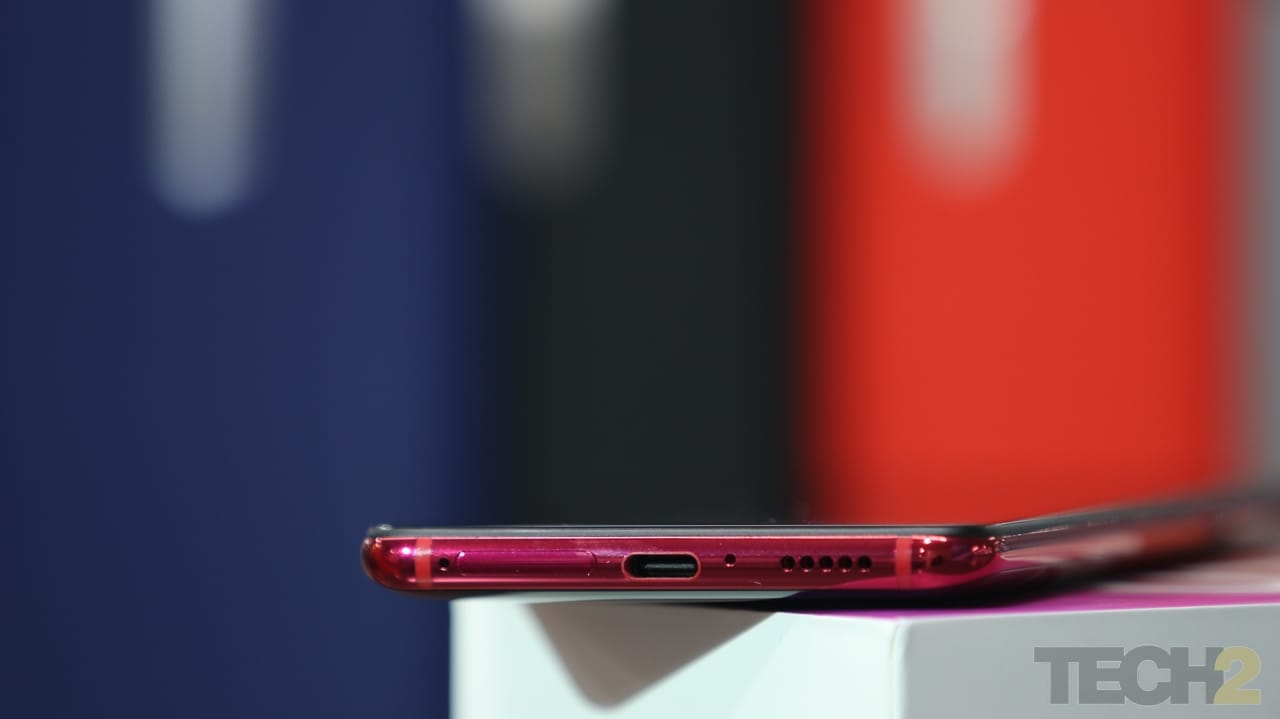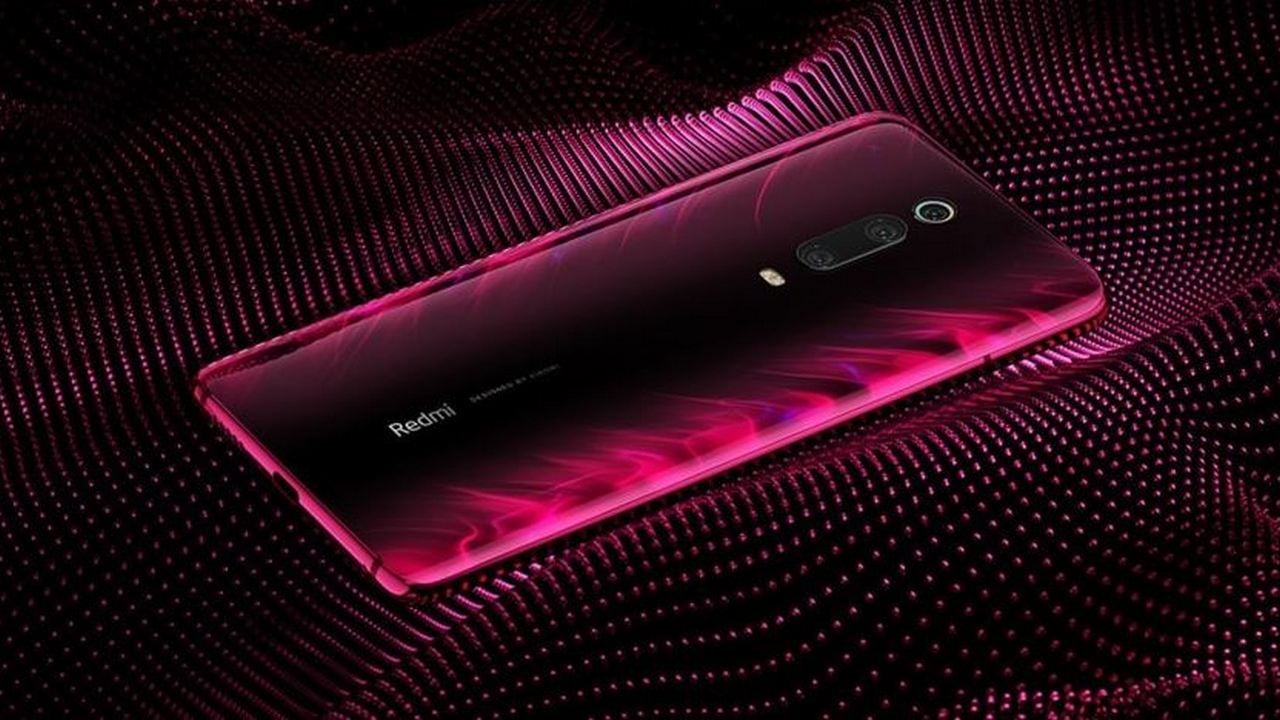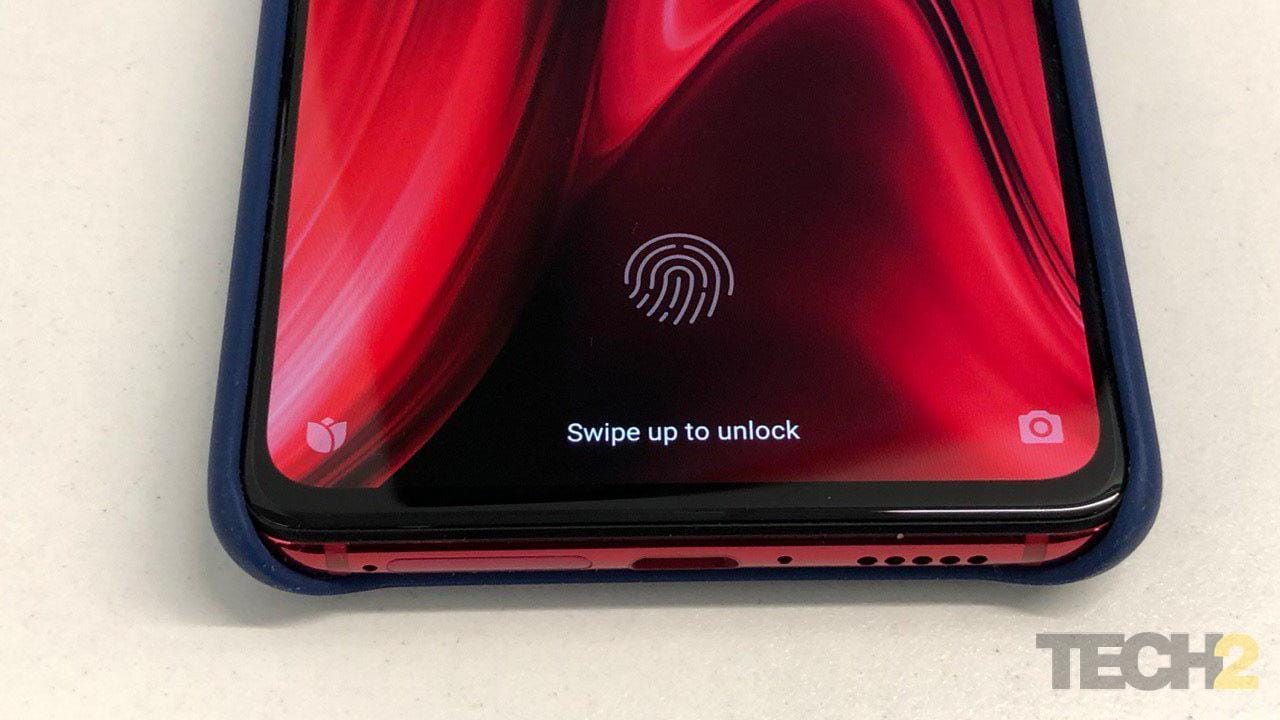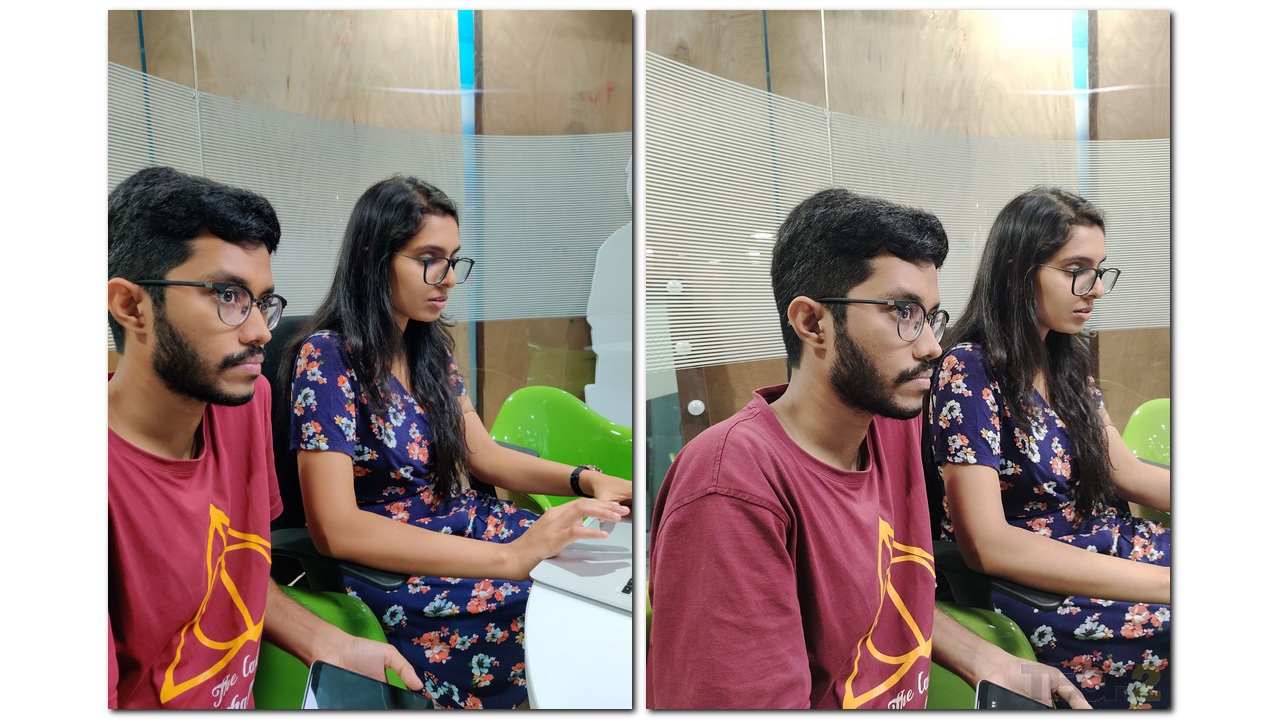After having captured the budget and mid-range smartphone market in India with its star products in these segments, Xiaomi is now aiming higher. The Redmi K20 Pro and the K20 series has been announced with just one aim in mind — to plug the gap left in the Rs 30,000 price segment. And to woo the buyers looking to get a OnePlus device. The ‘ **Flagship Killer 2.0** ’ moniker does not escape one and leaves little to the imagination. Although Xiaomi claims that this is a throwback to its first-ever smartphone - the Redmi 1S - which it called a flagship killer, we all know who is associated with that tagline in 2019. The sub-Rs 30,000 domain used to be a OnePlus monopoly. But over the last couple of years, OnePlus has departed that budget to chase a higher price point for its flagship devices. It is surely making a dent there, as we have seen it emerging as the **most sold flagship device in many quarters** . With the Redmi K20 Pro, Xiaomi aims to shake up this segment. Will it succeed in doing so? Short answer: Yes, there is immense potential. Leaving aside a few pain points, the Redmi K20 Pro delivers on most fronts. Long answer: Read on.
Gorgeous design creates a positive ‘Aura’ around the K20 Pro
[caption id=“attachment_7003201” align=“alignnone” width=“1280”] Redmi K20 Pro comes with a gorgeous design.[/caption] Well-designed Xiaomi phones were only seen with its Mi Note series (which never made it to India) as well as with the Mi MIX series (a very niche segment). Xiaomi’s sub-Rs 20,000 phones have always been about the value and weren’t really known for their design. This status quo changed after the launch of the Redmi Note 7 series this year. The Redmi K20 Pro series takes that several notches higher. In a word, the K20 Pro looks gorgeous. It features an ‘Aura Prime’ design on its back and comes in the red and blue colour variants. The back is made of multiple layers of Corning Gorilla Glass 5 squeezed together to give a unique pattern which adjusts according to the ambient light. There is a black colour in the centre which neatly masks the triple camera setup. When held in direct ambient light, sharp shiny patterns form around the edges on the back. The back is also curved around the edges, meeting the aluminium frame seamlessly. I didn’t notice any rough edge or gap between the glass and metal, along the entire span on the left as well as the right-hand edge. [caption id=“attachment_7003291” align=“alignnone” width=“1280”]
 Redmi K20 Pro comes with a USB Type C port[/caption] While the left-hand edge is smooth, you get the volume rocker and power/standby button on the right hand side. On the base, there’s the dual SIM card slot, USB Type C port and the speaker grille. On the top, you have the pop up camera on the left and a 3.5 mm audio jack on the right hand side. The front is an all-glass slab with no notch whatsoever. The earpiece speaker is placed in a tiny slit in the top centre portion. Bezels are slim along all sides and all you get is a 6.4-inch Super AMOLED display protected by Gorilla Glass 5. [caption id=“attachment_7003261” align=“alignnone” width=“1280”]
Redmi K20 Pro comes with a 6.4-inch Super AMOLED display[/caption] The in-hand feel of the phone is good thanks to the curved glass edges. Despite having a glossy back, fingerprints and smudges were not that much of an issue really and were easy to remove. It is a tad bit slippery and I used it with the silicone cover. If you can, do get a transparent cover as if you have the red or blue variant, you would want to show it off. At under 200 g, the Redmi K20 Pro isn’t as heavy as the OnePlus 7 Pro but provides just the right kind of heft that’s needed. The weight distribution on the phone ensures that it doesn’t lead to fatigue while holding it. Since this is a 19.5:9 aspect ratio device, forget confident one-handed use unless you have really large hands. When you activate the Full screen mode, the keyboard goes even further down (snapping to the lower edge) thereby making typing a wee bit painful. Using this phone when you’re lying on your back and looking up at the display can lead to pain in the fingers and thumbs when typing out emails as I experienced on many occasions. A disadvantage of having a display coming right up to the edge is that a lot of phantom presses do get registered. The palm rejection around the edges isn’t that great, unless you make the settings in the game turbo mode. This can get annoying when you are in the camera mode and trying to reach a distant part of the display for focussing. Or when watching a YouTube video in the portrait mode and trying to adjust the playback settings. [caption id=“attachment_7003521” align=“alignnone” width=“1280”]

Xiaomi’s first Super AMOLED display is a hit
The Redmi K20 Pro has gone a bit conservative with the display in terms of resolution. The 6.4-inch Super AMOLED display marks the first instance of Redmi using a Super AMOLED display. It comes with a 2340x1080 pixel resolution. The 19.5:9 aspect ratio comes protected with Corning Gorilla Glass 5. The K20 Pro ticks off all the boxes one would expect from a flagship display. The blacks are deep, contrast is great. Brightness levels are off the charts for a Redmi device. You would be well off being under 60 percent brightness levels if you are just browsing through Twitter, Instagram or reading a webpage. Brightness can be increased when watching movies. Text is crisp and sunlight legibility is great. At no point did I find myself squinting at the display. [caption id=“attachment_7003531” align=“alignnone” width=“1280”] Redmi K20 Pro[/caption] Paired with the loud and clear sound and no notch or hole punch to distract, I enjoyed binge-watching Stranger Things 3 on the K20 Pro. It does support HDR10 as well. The only issue I faced was with the Adaptive Brightness of the K20 Pro, it just wasn’t gradual enough and while watching TV shows while commuting, I would just disable it. This is a pity for a display that is good in all aspects. Maybe a future MIUI 10 update can fix it. The fact that it has a Super AMOLED display also lets you keep an always-on ambient display. Redmi has added around 16 digital stickers for the ambient display which will also show you the time, as well as notifications. The display can either show you the navigation buttons or you can head to Settings > Full Screen display and select the Full screen gestures mode. It will take you through a practice exercise of going to home page, opening recent apps and going back and forth. You will learn these gestures in no time and it just gives you that wee bit of extra screen real estate.
Packed to the gills with features, but certain major omissions as well
Being the first flagship device from the Redmi stable, the K20 Pro has gone all out on the specs front. For starters, it is powered by the Qualcomm Snapdragon 855 SoC which has one Kryo 485 Gold core operating at 2.84 GHz, three Kryo 485 Gold cores operating at 2.42 GHz and four Kryo 485 Silver efficiency cores clocked at 1.8 GHz. This is paired with the Adreno 640 GPU. The K20 Pro comes in a 8 GB RAM and a fixed 256 GB UFS 2.0 storage. You can’t expand the storage using a microSD card slot. [caption id=“attachment_7003221” align=“alignnone” width=“1280”] Redmi K20 Pro has three rear cameras[/caption] On the camera front, you have a 48 MP primary camera supported by an 8 MP telephoto camera and 13 MP ultra wide camera. The front camera is a 20 MP motorised pop-up camera which comes with guiding lights on its side as the motor pops up the camera. We will discuss it in more detail in the camera section. It runs on Android 9 Pie with the MIUI 10 skin on top. The operating system is standard MIUI affair, with a lot of preloaded apps. While you can delete third-party apps if you don’t want them, the system apps remain. Thankfully there were less advertisements in my face this time around. You can get rid of them by toggling the Personalised Ads in the Settings menu to off. But despite this, Mi Video would still show up some ‘recommended videos to watch’ after I was done playing back a video. A 4,000 mAh Li-Polymer battery powers the device and it supports fast-charging up to 27 W. But bundled in the box is an 18 W charger which takes around 90 mins to fully charge the K20 Pro. It runs on Android 9 with the Xiaomi MIUI 10 skin atop it. In terms of connectivity, you have support for Bluetooth 5.0 with A2DP, LE, aptX HD for Bluetooth audio; Wi-Fi 802.11a/b/g/n/ac; dual-band GPS with A-GPS, GLONASS; NFC and FM radio as well. There’s an under-display fingerprint scanner. [caption id=“attachment_7003741” align=“alignnone” width=“1280”]
 Redmi K20 Pro comes with an under-display fingerprint scanner[/caption] But, the Redmi K2o Pro does miss out on some major features that one associates with flagship devices. These include wireless charging, water resistance, optical image stabilisation and infrared blaster (this is something one expects in a Redmi device).
Redmi K20 Pro comes with an under-display fingerprint scanner[/caption] But, the Redmi K2o Pro does miss out on some major features that one associates with flagship devices. These include wireless charging, water resistance, optical image stabilisation and infrared blaster (this is something one expects in a Redmi device).
Kya ye PUBG wala hai?
Ha, bilkul. With the Snapdragon 855 SoC housing the Adreno 640 GPU, you can play PUBG Mobile at the highest settings without experiencing any sort of frame drops. I was amazed at how smooth the game ran in the 60 fps mode without any throttling and any drop in the image quality. The resident PUBG experts in team Tech2 gave it a thumbs up. The phone does get mildly warm on the rear side during long gaming sessions, but not hot enough to make the phone behave strangely. The triple-layered core arrangement really does help keep the heat management in check. Redmi K20 Pro also houses a multi-layered graphite cover to help in dissipating heat. It certainly worked on the phone.
Blazing fast performance
With the Snapdragon 855 chipset onboard paired with 8 GB RAM, the Redmi K20 Pro excels in the performance department. There was nary a moment when I found the phone to be lacking at any task. Any app thrown at the K20 Pro performed with elan. One of the most impressive features I found was the speaker. Even though there is just one downward firing speaker, it is loud enough and crisp enough to make up for two speakers to give you an almost stereo feel when you listen to it from an arms length. With a brilliant display and that sound, I didn’t feel the need to use earphones when I was watching videos - provided of course I was by myself and not disturbing others around me. If you are at a house party, the loudspeaker on the phone eschews the need for a Bluetooth speaker. Even at the loudest volume level, I didn’t notice any sort of crackling or sound distortion. So kudos to Redmi for giving us an excellent speaker on a phone. Call quality was good and the earpiece speaker is loud enough. [caption id=“attachment_7011151” align=“alignnone” width=“1280”] Redmi K20 Pro comes with plenty of software customisations, including an always-on display, the ability to lock apps and even a customisable fingerprint animation.[/caption] The under-display fingerprint scanner that Redmi K20 Pro houses, is a letdown. It’s slow. There hasn’t been a single implementation of this tech that is as fast as the physical fingerprint scanner on the phone. The K20 Pro lights up with you try to login, so that helps in the sense that you know which area to have your thumb or finger on. But you have to place the finger on the screen for a good second before the phone unlocks. If you have wet fingers, which is often the case outdoors in this rainy weather, then forget using the under-display scanner. While Face Unlock is an option, using it is redundant as you also have to take into effect the motorised pop up camera mechanism. A physical fingerprint scanner would disturb the design philosophy on this, so one can understand why it wasn’t included.
Camera delivers in most situations, but low light performance is still lacking
There was a time when a higher megapixel count on the camera was considered as a badge of honour. In 2019, that badge of honour has been replaced by having more than one rear camera. Barring the Google Pixel devices, which use software to soup up the image quality, most of the other smartphone brands have gone the dual, triple and even quad-camera route. The Redmi K20 Pro comes with three rear cameras and a motorised pop-up camera. The camera configuration is as follows:
- 48 MP primary camera with an f/1.8 aperture 26 mm lens with a half-inch sensor
- 13 MP ultra-wide camera with f/2.4 aperture 12 mm lens with a 1/3-inch sensor
- 8 MP telephoto camera with f/2.4 aperture 53 mm lens with a 1/4-inch sensor
- 20 MP front-facing camera with f/2.0 aperture
[caption id=“attachment_7003271” align=“alignnone” width=“1280”] Redmi K20 Pro comes with a 20 MP motorised pop-up camera[/caption] The Redmi K20 Pro features a fall detection mode for the motorised front-facing camera..so the moment it detects a fall the camera retracts inside. The rear camera is capable of shooting 4K at 60 FPS, but the electronic image stabilisation is present only for 4K at 30 fps. In full HD mode, you can shoot slow-motion video at up to 960 fps. The front camera is capable of shooting 1080p at 30 fps. The Redmi K20 Pro offers the 12MP regular photo mode which lets you use the telephoto and ultra-wide modes. It uses pixel binning to combine four pixels into one. In addition to this, the K20 Pro also offers a dedicated 48 MP output mode. It also takes up a lot of space on your storage - around 16 MB per photo. So use it judiciously.
Daylight photos come out well and there’s little to complain here - this is one area which most cameras have got right. The 13 MP ultrawide mode will tend to have a barrel distortion around the edges. Otherwise, the photos are well balanced, the dynamic range is great and so is the edge to edge sharpness. I kept the HDR mode on and found the image output to be quite pleasing in the daylight with details such as leaves on trees appearing pretty sharp. I won’t bore you much with analysis here, the photo album has more than enough daylight photos for you to see how the camera performs. The low light photographs from the rear camera are good so long as there is some ambient light around. Shooting indoors in a restaurant or in the house shouldn’t be an issue at all. Even shooting under streetlights gives usable images. The low light images coming out of the Redmi K20 Pro were certainly better than the OnePlus 7. But having said that, noise does creep in the images every now and then. The Redmi K20 Pro comes with a Night Mode, but you need to be really steady as it take a series of photographs depending on the ambient light. The output is definitely better than one in the Auto Mode. [caption id=“attachment_7009951” align=“alignnone” width=“1280”]
 Portrait mode photos on the OnePlus 7 were better than Redmi K20 Pro. OnePlus 7, Redmi K20 Pro (L to R)[/caption] Selfies in low light, especially in the Portrait mode, are quite bad. There is absolutely no sense of balancing of light and as you can see in the album, the background gets washed out while details on my face aren’t that clear either - this holds true even when shooting a video with the front camera, it just does away with any texture in the sky in the background for instance in the daytime. The Pixel 3a XL still is the gold standard as far as low light selfies or portraits are concerned in the sub Rs 40,000 price bracket. In the portrait mode, the images coming out of the OnePlus 7 do appear more pleasing than the Redmi K20 Pro. Also, the K20 Pro is not so adept at separating the background, some hair around your head will also get blurred out and if you are taking a group selfie, the blurring of the background is quite temperamental. [caption id=“attachment_7010121” align=“alignnone” width=“1280”]
Portrait mode photos on the OnePlus 7 were better than Redmi K20 Pro. OnePlus 7, Redmi K20 Pro (L to R)[/caption] Selfies in low light, especially in the Portrait mode, are quite bad. There is absolutely no sense of balancing of light and as you can see in the album, the background gets washed out while details on my face aren’t that clear either - this holds true even when shooting a video with the front camera, it just does away with any texture in the sky in the background for instance in the daytime. The Pixel 3a XL still is the gold standard as far as low light selfies or portraits are concerned in the sub Rs 40,000 price bracket. In the portrait mode, the images coming out of the OnePlus 7 do appear more pleasing than the Redmi K20 Pro. Also, the K20 Pro is not so adept at separating the background, some hair around your head will also get blurred out and if you are taking a group selfie, the blurring of the background is quite temperamental. [caption id=“attachment_7010121” align=“alignnone” width=“1280”] The photo on the left shot by OnePlus 7 doesn’t show much detail in the hair and also tends to oversaturated the red Tshirt whereas Redmi K20 Pro (right) manages an overall colour balanced output that’s sharp.[/caption] Videos in daylight at 4K 60 fps are quite usable but the stabilisation isn’t great, so unless you are shooting with minimal phone movement, use 4K 60 FPS. The best video output is extracted from the Full HD at 60 FPS mode where the EIS stabilisation is good even when you are walking around and shooting. There is less jitter when you pan - the jitter is noticeable in both Full HD and 4K in the 30 FPS mode. It does track moving subjects well. In low light, there is a definite loss of sharpness and things just appear too waxy for my liking. Add to this there is a lot of focus hunting. Your best bet would be to shoot only in 1080p @ 60 fps when you are on the move and 4K @ 60FPS when the phone is steady.
The photo on the left shot by OnePlus 7 doesn’t show much detail in the hair and also tends to oversaturated the red Tshirt whereas Redmi K20 Pro (right) manages an overall colour balanced output that’s sharp.[/caption] Videos in daylight at 4K 60 fps are quite usable but the stabilisation isn’t great, so unless you are shooting with minimal phone movement, use 4K 60 FPS. The best video output is extracted from the Full HD at 60 FPS mode where the EIS stabilisation is good even when you are walking around and shooting. There is less jitter when you pan - the jitter is noticeable in both Full HD and 4K in the 30 FPS mode. It does track moving subjects well. In low light, there is a definite loss of sharpness and things just appear too waxy for my liking. Add to this there is a lot of focus hunting. Your best bet would be to shoot only in 1080p @ 60 fps when you are on the move and 4K @ 60FPS when the phone is steady.
Battery life is great for regular users, but gamers will be left wanting
Redmi K20 Pro The Redmi K20 Pro comes with what has now become a standard Xiaomi feature - a 4,000 mAh battery. It easily lasted for a day with the Adaptive battery mode off. With the mode on, I could even stretch it for over a day and a half. [caption id=“attachment_7009811” align=“alignnone” width=“1280”] The Redmi K20 Pro shows promising battery life given its performance-oriented tuning.[/caption] The battery is good enough to binge an entire 8-episode series on a single charge. For non-gamers, the battery life is good enough for handling daily workloads, a bit of music, messaging, photographing and watching videos. Could Redmi have had a higher capacity battery? Sure. But I could extract 5 hour plus on-screen time which is good enough for most users. If you get a 27 W charger separately, you can take advantage of the fast charging capability.
Verdict and Price in India
The **OnePlus 7** starts from Rs 32,999 for the 6 GB RAM and 128 GB storage variant. The **Asus 6Z** starts from Rs 31,999 for the 6 GB RAM and 64 GB storage variant. The Honor 20 starts from Rs 32,999 for the 6 GB RAM and 128 GB storage variant. The Redmi K20 Pro starts from Rs 27,999 for the 6 GB RAM and 128 GB storage variant. Clearly, the Redmi K20 Pro offers better specifications in that attractive bezel-less design at a lower price tag (along with that pop-up camera). The Redmi K20 Pro delivers on most fronts: performance, design, gaming, audio, display, and makes for a great all-round smartphone as well. The camera falls a bit short, but it not too far behind the competition. It has just one aim in mind, to challenge the hegemony of OnePlus in the affordable flagship segment. Given its price, I am sure it will do that. But is it really a flagship killer? Well, the answer is not so easy. OnePlus has carved a niche for itself in this segment, and its operating system experience is by far the best outside of the Pixel devices. I believe dismantling OnePlus from that throne won’t be an easy task for Redmi. But hey, at least now there is an affordable (sub Rs 30,000) alternative to the OnePlus 7! The phone comes recommended if you can live with MIUI 10 and the slow under-display fingerprint scanner. But where would that slot the speculated POCO F2? Xiaomi looks set to create confusion in the 20-30k segment as well with the K20 series. I wouldn’t be surprised if Xiaomi releases a Redmi K20 Lite next. All said and done, if you are looking for a flagship device under Rs 30,000 the K20 Pro comes highly recommended.


)
)
)
)
)
)
)
)
)



